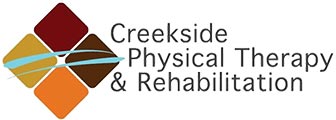Ankle sprains are some of the most common injuries in the lower extremities. These injuries occur when the ankle quickly moves outside its normal range of motion, damaging ligaments and soft tissue supporting the joint.
The most common type of these injuries is called an inversion ankle sprain, where the foot rolls inward and the structures on the outside, or lateral, ankle are damaged.

The severity of ankle sprains can be classified in three levels of severity, or grades with regards to the ligamentous damage:
-
Grade I: mild tearing/stretching of the ligament. This is usually accompanied by mild-moderate pain, and potentially swelling and bruising.
-
Grade II: moderate/significant, but not complete tearing of the ligament. This is accompanied by moderate-significant bruising, swelling, and pain.
-
Grade III: complete tearing of the ligament; mild to moderate pain, accompanied by moderate-significant swelling and bruising.
Other types of ankle sprains include eversion ankle sprains, where structures on the inside, or medial, ankle are damaged, and high ankle sprains, where ligaments of the two long bones of the lower leg, the tibia and fibula, are damaged.
What to do at home if you sprain your ankle in Portland, Oregon
What to do if You Sprain Your Ankle at Home
While these injuries can be quite painful, there are several steps you can take at home to reduce the pain and accelerate the healing. P.R.I.C.E and P.O.L.I.C.E are helpful acronyms to remind you of these steps:
-
Protection: use of an ankle brace, stiff shoe, or walking boot can reduce the risk of re-injury to the damaged structures.
-
Rest: reducing your activity can allow the damaged structures to heal.
-
Mild and tolerable movements, however, can assist with healing.
-
Ice: Ice can be a great way to reduce swelling and pain in the injured area.
-
Compression: compression wraps, garments can assist with reducing swelling.
-
Elevation: elevating the damaged structures above the heart utilizes gravity to assist with swelling.
The Acronym P.O.L.I.C.E replaces the rest component of P.R.I.C.E with Optimal Loading; meaning that you move the ankle as much as you can tolerate while minimizing pain, as this can improve the rate of healing.
What to do if your ankle sprain is not getting better
The above protocols can be a great starting point for your rehabilitation, but sometimes a stubborn injury requires some extra assistance to get you back to the activities you love most. Reaching out to a licensed Physical Therapist can reduce the recovery time, improve your strength, reduce your pain, and reduce the risk of re-injury in the future.
Here at Creekside Physical Therapy & Rehabilitation, we specialize in injuries of the foot and ankle. We work closely with the providers at Northwest Extremity Specialists where we are able to collaborate and make an effective plan of care catered to your individual needs. We incorporate extensive hands-on treatment, as well as education and exercises to get you moving at your best.
With several locations in the greater Portland, Oregon metro area, we are here to help you get back to enjoying the beautiful Pacific Northwest. Give us a call at 503-245-5710, or send us a message using the form below to get scheduled for your first appointment.
Information regarding the specific anatomy of ankle sprains can be found below for additional information and insight.
Anatomy of a Lateral Ankle Sprain

Ligaments
The anterior talofibular ligament (ATFL), calcaneofibular ligament (CFL), posterior talofibular ligament are all commonly injured ligaments following a lateral, or inversion, ankle sprain. The primary job of the ATFL is to stabilize the anterior & lateral portion of the ankle. When this ligament is stretched or torn, the ankle can become unstable. This often gives the sensation of the ankle feeling 'sloppy' when moving or like the ankle bones are shifting as you place weight on the foot.
The CFL ligament also helps to stabilize the lateral aspect of the ankle joint. If it's damaged, you can feel similar sensations of instability as with ATFL damage. The PTFL is usually less commonly injured compared to the ATFL and CFL, but damage to this ligament can produce similar symptoms to tearing of the other ligaments.
Muscles
The peroneal (also known as the fibular) muscle and tendon group are frequently damaged with an inversion sprain. These muscles originate along the lateral aspect of the lower leg, starting below the knee and extending down towards the outer aspect of the ankle. This group is comprised of three muscles: peroneus longus, peroneus brevis, and peroneus tertius.
The peroneus longus and brevis tendons wrap around the posterior aspect of the lateral malleolus and attach into different locations and provide stability to the lateral ankle. The peroneus longus wraps underneath the foot before inserting on the 1st metatarsal and medial cuneiform. The peroneus brevis attaches into the base of the 5th metatarsal on the lateral foot. The peroneus tertius passes in front of the lateral malleolus and attaches to the dorsal aspect of the 5th metatarsal. With an inversion sprain these muscles and tendons are stretched. The muscles can be strained, where the tension applied to the muscle exceeds its loading tolerance and the proteins holding the muscle fibers together are damaged. When excessive loading takes place in the tendon itself, a sprain occurs.
Anatomy of a Medial Ankle Sprain
Medial, or eversion, ankle sprains are relatively uncommon compared to inversion ankle sprains. These injuries occur when the forefoot rotates away from the body and the inside of the foot rolls inward, damaging the ligaments and tendons along the inside of the ankle and foot.

Ligaments Involved with a Medial Ankle Sprain
The deltoid ligament, comprised of posterior tibiotalar ligament, tibiocalcaneal ligament, tibionavicular ligament, and anterior tibiotalar ligament, is the main ligament damaged with an eversion sprain. This ligament system is relatively stronger than the ligaments of the lateral ankle, contributing to the rarity of these injuries.
Muscles Involved with a Medial Ankle Sprain
The main muscle providing support to the medial ankle is the posterior tibialis muscle. This muscle originates on the medial lower leg, where its tendon tracts behind the medial malleolus before terminating in the navicular, medial cuneiform and bases of the 2nd-4th metatarsals.
Anatomy of a High Ankle Sprain
High ankle sprain or syndesmotic ankle sprain occurs when the ligaments that attach the tibia and fibula together at the ankle are damaged. The usual mechanism of injury is when the talocrural joint is forcefully dorsiflexed and externally rotated. These injuries are less common than lateral ankle sprains with much longer recovery times in comparison.
Ligaments Involved with High Ankle Sprains
The fibula and tibia are joined by 3 ligaments. These ligaments are the Anterior Tibiofibular Ligament (AITFL), Posterior Tibiofibular Ligament (PITFL) and the Interosseous Ligament (IOL). If these are damaged the ankle joint does not have a stable foundation to move on, leading to instability and pain.

